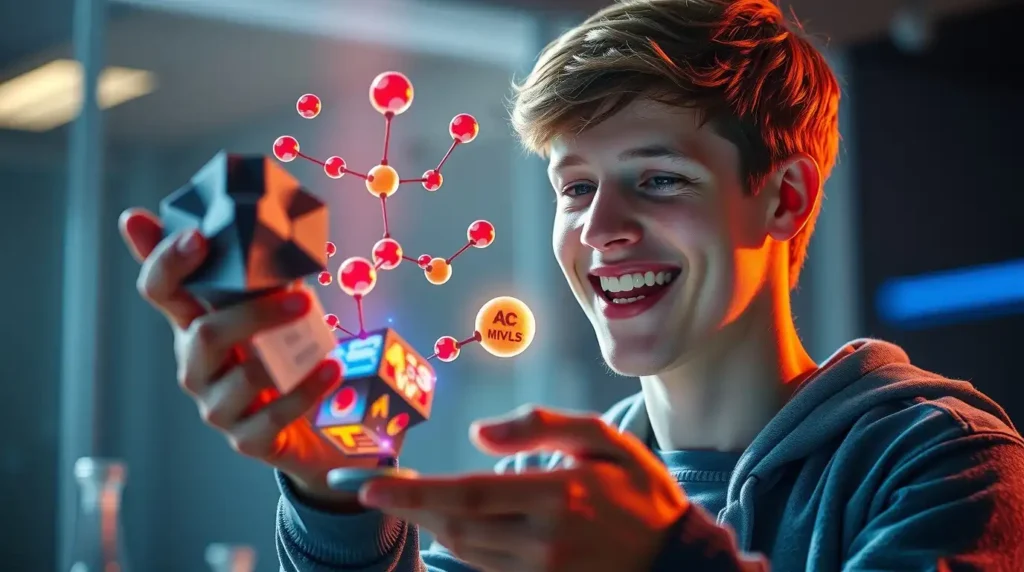
Chemistry can feel abstract on paper. I know the feeling. You read a diagram, then your mind still drifts. With MARVLS AR Chemistry, the story changes. This Augmented Reality App brings molecular models to your desk through your phone camera. You can walk around atoms. You can pinch to zoom. You can see shapes in real space. That is why students and teachers love it. You get faster insight and stronger recall.
About Updated Information
App details can change over time. I want you to have the freshest facts. Check the official listing on Google Play or the App Store. For core tech, see ARCore and ARKit. For chemistry refreshers, see the Periodic Table and Chemical Bonding. This guide stays accurate in structure. You can verify version notes on the store page with one tap.
| App | MARVLS AR Chemistry |
| Version | Varies with device |
| Updated on | Aug 31, 2025 |
| Requires Android | Varies with device |
| Downloads | 50+ downloads |
| Content rating | Rated for 3+ Learn more |
| Permissions | View details |
| Released on | Aug 23, 2024 |
| Offered by | Michele MARVLS |
What the app is and why it is popular
MARVLS AR Chemistry places 3D molecules into your room using computer vision. The app detects flat surfaces through plane detection, then anchors atoms and bonds in your space. You rotate models with one finger. You zoom with two. You switch styles like ball and stick, space filling, or wireframe. You clearly see bond angles and relative sizes. Your brain loves concrete objects. You get quick wins that print into memory.
How MARVLS AR Chemistry works and what makes it unique
Your phone builds a light map of the room through the camera and the motion sensors. The process is known as SLAM, which stands for simultaneous localization and mapping. The app then pins a coordinate to your desk and renders molecular models at that anchor. The result feels stable while you walk around. This stability matters for learning since it protects your spatial reference as you compare shapes.
The unique edge is pedagogy. The app is built for study, not only for wow moments. You can toggle VSEPR geometry helpers. You can color-code hybridization states. You can show dipole moment vectors and electron density overlays. You can compare intermolecular forces through side-by-side models. The features line up with class goals and exam tasks. That is the secret sauce.

Version and developer information
I want you to view official facts in one place. Open your store listing to confirm these fields
- The latest version number varies with Devices.
- Developer name and support contact
- First release date plus the latest update date
- Device and OS requirements
- Notes in What is new for features and fixes
This check takes under one minute and gives you full confidence before you install.
Step-by-step guide to use the app
Install and prepare
Install from Google Play or the App Store. Update your OS. Grant camera and motion access. Pick a bright room with a matte table. A textured surface helps tracking.
Scan your space
Move the phone slowly in a gentle figure eight. Wait for dots or a grid. That shows the system has found a plane. Tap once to place your first anchor. If the model drifts, pause, then rescan.
Load your first Molecule
Open the library. Search by name or formula. Start with water H2O to see a bent shape. Try methane, CH4, for tetrahedral. Load benzene C6H6 to feel aromaticity. Each example builds intuition.
Explore views and data
Switch between ball and stick and space filling. Turn on charge or vector overlays if present. Measure bond angles and bond lengths with the on-screen tools. Walk around the model to build a full picture. Rotate with one finger. Zoom with two fingers.
Capture and share
Take an AR snapshot for your notes. Use system screen recording for a quick study reel. Add labels to highlight polarity or shape. Share with your class group. Review before exams.
Key features in plain language
The first win is stability. The model stays put as you move. That reduces cognitive load and makes studying feel natural. The second win is the concept overlays. You can view VSEPR geometry helpers, then confirm each bond angle in place. You can toggle hybridization for sp, sp2, and sp3. You can reveal dipole moment arrows with electron density shading. These overlays bring questions to life.
Another strength is fast comparison. Put two structures side by side, then walk around both. Show cis and trans isomers and let your eyes grasp the difference. Explore intermolecular forces by comparing size and shape. You get insights that no flat page can give.
The library keeps growing, too. New model packs and prompts arrive through updates. You always have fresh material for practice.
Benefits and educational value
The biggest benefit is accelerated comprehension. Real 3D scenes build stronger mental models. That leads to faster problem-solving and better recall under pressure. Homework takes less time. Lab notes feel clearer. Test scores improve with less stress.
The app also boosts motivation. AR feels playful yet focused. You explore for more minutes each day without burnout. The extra time compounds into mastery. Teachers gain a flexible visual tool for the whole class. Students engage because atoms appear in the room. Access is simple. You need only a phone light and a flat surface.
How it compares with other AR apps
Many titles show a spinning model that looks cool but stops there. MARVLS AR Chemistry goes deeper with measurement tools and study paths. You get bond angle meters. You get polarity and electron density overlays. You get multiple visualization styles that match real coursework. Broad STEM apps cover many subjects. This one keeps focus on chemistry, so you gain skills without distractions.
Download and Step into the World of Augmented Reality
If you want chemistry to click in your mind, start here. Get MARVLS AR Chemistry on a device that supports ARCore or ARKit. Use a bright desk and a clean surface. Place your first model and walk around it. Compare linear, bent, and tetrahedral shapes. The insight arrives fast. Teachers can project the scene so the whole class sees the same anchor and the same molecular models.
Practical setup tips
Clean the camera lens for crisp tracking. Pick surfaces with texture. Move slowly when you place an anchor. Step back to view the whole model. If drift appears, then rescan and re-anchor. These tiny habits save time and keep your focus on learning.
Pricing privacy and classroom readiness
Pricing can vary by platform and region. Read the listing before purchase. Review the privacy policy on the store page. For schools, confirm how the app handles student data under relevant laws. For larger classes, consider implementing a mobile device management plan and providing a short checklist to ensure all students load the same model set.
A quick five-day skill plan
Day one, place water and measure its bond angle, then write three lines on what you observe
Day two, compare CO2 and SO2, then decide which is polar and why
Day three, compare NH3 and CH4, then explain the effect of lone pairs on shape
Day four, load benzene to feel aromaticity, then discuss resonance
Day five, place cis-2 butene beside trans 2 butene, then describe the visual difference in your own words
FAQ
Does it work offline?
Stored models can be viewed offline, yet some features may require an internet connection.
Will it run on my device?
Check your store page and the device compatibility list for ARCore or ARKit.
Can I record videos
Yes, you can use the built-in screen recording feature, then add voice notes for studying.
Is it good for beginners?
Yes, visuals start simple, then scale to advanced topics at your pace.
Download MARVLS AR Chemistry Now
Ready to learn faster with fewer headaches. Get the app today. The mix of stability concept overlays and focused design makes it a strong study partner.
Visit our Download Page to get the latest version of Merge Explorer and explore the magic of AR on your device.


